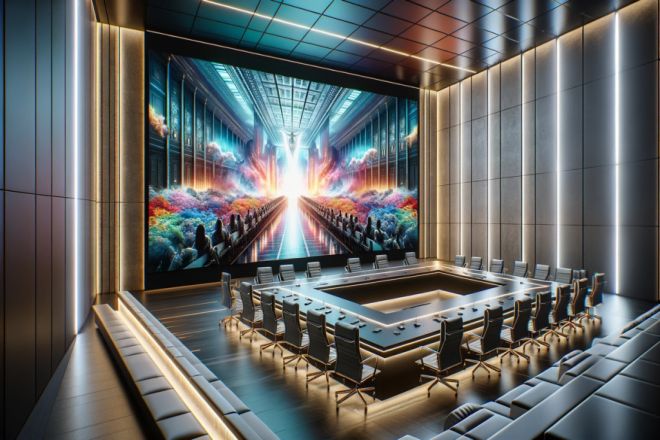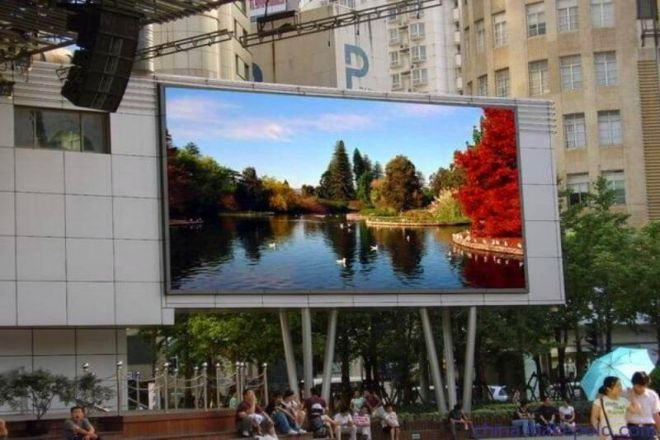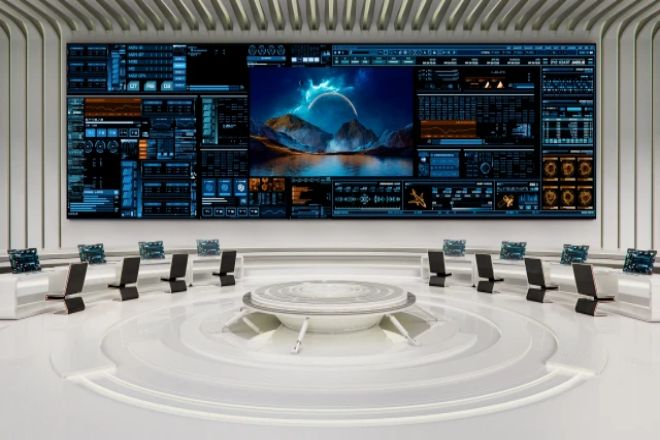序章

With the continuous advancement of technology and the increasing maturity of the market, LEDディスプレイ have become an indispensable part of our daily lives. Whether it is commercial advertising, outdoor large screens, sports venues, or conferences and exhibitions, LED displays have won wide recognition and applications with their unique advantages and excellent performance.
However, in many applications, how to ensure the clarity of LED displays so that they can present clear and lifelike pictures in various environments has become a common concern for the industry and consumers.
1. What is LED display clarity?
When we talk about the “clarity” of an LED display, we are actually describing how “clear” or “sharp” the images or text on this screen look. Imagine you are reading a newspaper.
If the words in the newspaper are blurred, it will be difficult for you to see what they are saying, but if the words are clear, you can read them easily.
The clarity of the LED display is the same as whether the words on it are “clear.” This mainly depends on the number and density of “little dots” (we call them pixels) on the screen.
The more pixels there are and the denser the distribution, the clearer the image will be. It’s like you have a big net. The smaller the holes (pixels) on the net, the finer the net and the more details it can capture.
Additionally, viewing distance also affects your perception of clarity. If you’re very close to the screen, the image may look sharp even if it doesn’t have a lot of pixels. But if you’re very far away, the pixels will appear too large, and the image will appear blurry.
Therefore, when you choose an LED display, if you want to get a clearer image, you need to choose a display with more pixels and a denser distribution. Of course, also consider your viewing distance and choose the appropriate screen size and resolution. In this way, you can get a better visual experience.
2. What aspects can affect the clarity of LED display?

The clarity of LED display screens is affected by many aspects. The following are several main factors:
- Resolution (pixel density):
Resolution is an important criterion for measuring the clarity of an LED display, usually expressed in terms of the number of pixels (number of horizontal pixels × number of vertical pixels). A higher resolution means more pixels on the screen, which can display more image details and higher clarity.
Pixel density (PPI or DPI) also affects sharpness. It represents the number of pixels per inch or square inch. The higher the pixel density, the sharper the image will look.
- Point spacing:
Point pitch refers to the distance between the centers of two adjacent pixels.
The smaller the dot pitch, the more delicate the picture display and the higher the clarity. The smaller pixel spacing makes the pixels denser and improves the ability to display details of the image.
- Grayscale:
Grayscale refers to the brightness level that can be distinguished from the darkest to the brightest single primary color brightness of the LED display.
The higher the gray level, the richer the colors, the more natural the color transitions, and the stronger the layering of the picture. This helps enhance the clarity and detail of your images.
- Contrast:
Contrast is a measure of the difference between light and dark in an image, which directly affects the clarity and layering of the image. The higher the contrast, the more vivid the image and the brighter the colors.
In text and videos with large black-and-white contrast, high-contrast LED displays have obvious advantages in terms of black-and-white contrast, clarity, and integrity.
- Brightness adjustment:
The impact of brightness adjustment on full-color LED displays cannot be underestimated. In application scenarios such as outdoor advertising, large stadiums, stage performances, etc., the flexibility of brightness adjustment can ensure that the clarity and color vividness of the picture is maintained under different lighting conditions.
Proper brightness adjustment can improve content visibility and viewing experience.
- 視聴距離:
Viewing distance is an important factor affecting the perception of clarity.
In places such as outdoor billboards or large stadiums, the distance between the audience and the display is often large, so the pixel density needs to be appropriately reduced to ensure that the image remains clear when viewed from a distance.
- Display content:
The level of detail in the display content also affects the need for clarity. If the displayed image itself does not have too many detailed requirements (such as simple text, shapes, etc.), then choosing a moderate pixel density can meet the needs.
3. 5 ways to improve the clarity of LED displays
- Choose a high-resolution LED display
High resolution is the cornerstone for improving the clarity of LED displays. High resolution means that the pixels on the display are denser, allowing for more detailed and clear images.
When purchasing an LED display, you should pay special attention to its resolution parameters to ensure that the selected product can meet your own needs for clarity.
- Optimize the driving circuit of the LED display
The drive circuit is the core component of the LED display screen, and its performance is directly related to the display effect of the display screen.
By using advanced drive circuit technology, such as constant current drive, PWM dimming, etc., the brightness uniformity and color reproduction of the LED display can be effectively improved. This not only makes the image clearer but also makes the colors more vivid and realistic.
- Choose high-quality LED lamp beads.
As the core component of the display screen, LED lamp beads have an important impact on the brightness, color, and lifespan of the display screen.
Choosing high-quality LED lamp beads, such as products with high brightness, high color reproduction, and long life, can significantly improve the LED display effect. High-quality LED lamp beads can make images brighter and colors fuller, thereby improving overall clarity.
- Accurately calibrate display brightness and color.
In order to ensure that the LED display screen can present the best visual effect in different environments, precise brightness, and color calibration are required.
Using professional calibration equipment and software to accurately adjust the brightness and color of the display screen can ensure the brightness and color uniformity of the display screen. Through calibration, not only can the clarity of the image be improved, but the colors can also be made more realistic and natural.
- Strengthen display maintenance and upkeep.
Regular cleaning and dust removal of LED displays is key to maintaining their clarity. Dust and dirt will seriously affect the display effect of the display, so the display should be cleaned regularly using professional cleaning tools and methods.
In addition, the cooling system and connecting lines of the display screen should be checked regularly to ensure their normal operation. Avoid display effect degradation caused by poor heat dissipation or circuit failure, thereby maintaining the clarity and stability of the LED display.
4. How to choose the clarity of LED display that suits you?

When choosing the right LED display resolution for you, there are several factors to consider to ensure the display meets your specific needs. Here are some key steps and considerations:
- Clarify application scenarios:
First, determine what application scenarios the LED display will be used for, such as indoor advertising, outdoor billboards, stadiums, conference rooms, etc. Different application scenarios have different requirements for clarity.
- 視聴距離:
Viewing distance is an important factor in choosing the clarity of an LED display. Generally speaking, the further the viewing distance, the lower the pixel density (PPI) required. Calculate appropriate viewing distance and pixel density to ensure content is clearly visible at a given distance.
- Resolution and pixel density:
Choose the appropriate resolution and pixel density according to the application scenario and viewing distance. High resolution and higher pixel density can provide sharper images but may also increase costs.
- Display content:
Consider the type of content that will be displayed. If it’s mostly text or simple graphics, a lower resolution may be enough. But if it’s video, pictures, or complex graphics, you’ll need a higher resolution to maintain clarity.
結論
To sum up, improving the clarity of LED displays requires starting from many aspects, including hardware selection, drive circuit design, LED lamp quality, brightness and color calibration, and maintenance.
Only by comprehensively considering these factors and taking effective measures and methods can we ensure that the LED display screen can present clear and realistic pictures in various environments and bring more comfortable and shocking visual effects to the audience.
最後に、LEDディスプレイについてもっと知りたい方は、 ご連絡ください。
